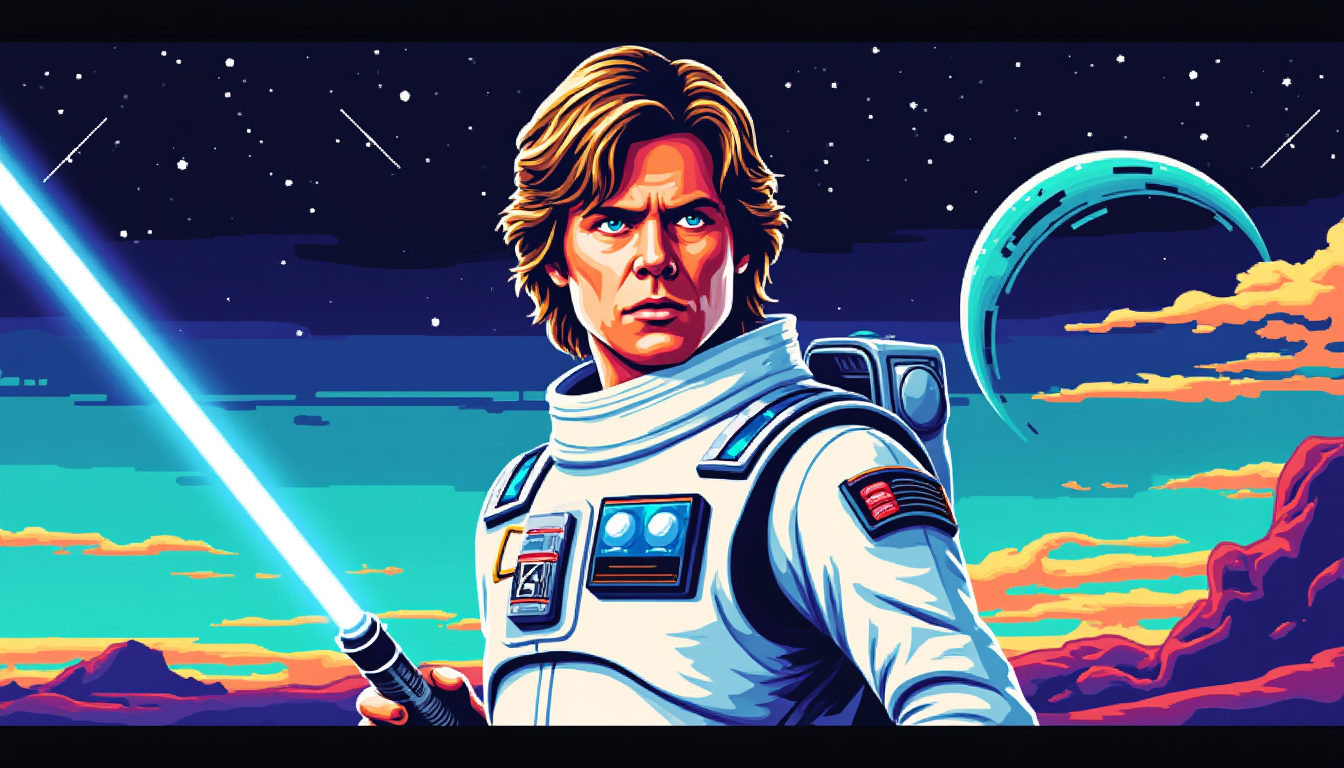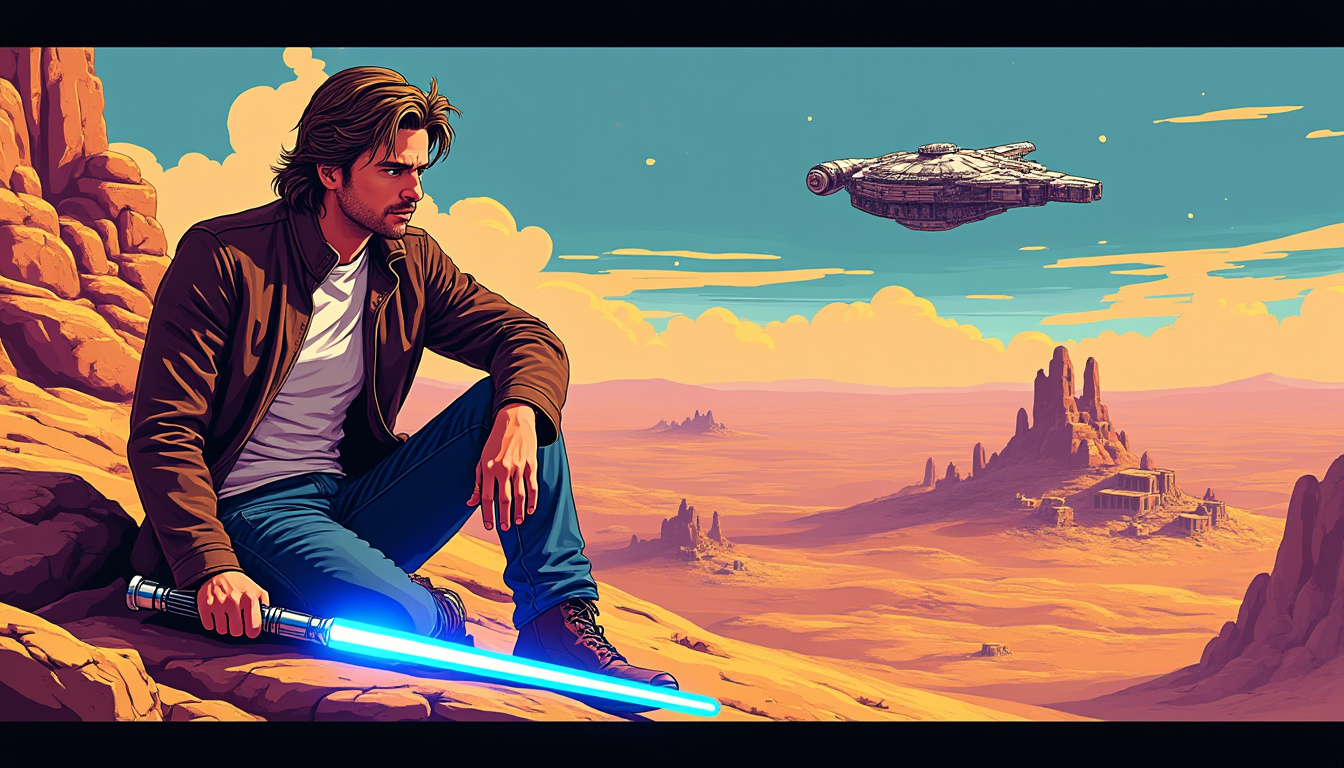In the realm of cinematic history, few characters resonate as profoundly as Luke Skywalker, portrayed by Mark Hamill. His journey from the humble beginnings of a farm boy on Tatooine to becoming a pivotal Jedi in the Star Wars saga showcases not only the storytelling genius of George Lucas but also the transformative journey of an actor faced with the duality of fame and typecasting. In a recent interview, Hamill shared reflections on how embodying Luke Skywalker shaped not only his career trajectory but also his understanding of the very nature of acting and celebrity within the film industry.

The Evolution of Luke Skywalker: A Study in Character Development
The portrayal of Luke Skywalker spans several decades, making him one of the most iconic characters in film history. Initially conceived as the daydreaming farmboy grappling with the discovery of his Jedi lineage, Luke underwent significant development across multiple episodes of the franchise.
In the original trilogy, we witness Luke navigate the complexities of adolescence, battling the darkness embodied by Darth Vader, and ultimately embracing his destiny. This evolution is paramount not only to the story of Star Wars but also to the maturation of Hamill as an actor. His ability to convey the internal struggles of Luke, and the result of those struggles, is notable.
- 🌌 Hero’s Journey: Luke exemplifies Joseph Campbell’s monomyth, highlighting the universal journey of growth and discovery.
- 🙌 Dualities of Character: The contrast between Luke’s innocent beginnings and his later disillusionment serves as a powerful narrative device.
- 🌓 Emotional Depth: Hamill’s portrayal adds layers to Luke, showcasing vulnerability alongside heroic bravado.
Character Consistency and Relatability
The consistency of Luke’s character amidst changing story arcs is a significant factor in why audiences connect with him deeply. As filmgoers observed Luke deal with betrayal, loss, and triumph, they saw reflections of their turmoil and joy mirrored in his narrative. Through the years, this relatability secured Luke as a steadfast cornerstone within the sprawling universe of Star Wars.
Moreover, this character consistency extends beyond individual films to the overarching themes of the saga, which include hope, perseverance, and redemption. Hamill’s insights reveal how understanding Luke’s journey improved his own performance, emphasizing the importance of staying true to the character. This underscores how, over time, both the actor and the character contributed toward each other’s evolution.
Reflection on these themes, especially in relation to modern storytelling constructs, showcases how well the Star Wars legacy has adapted to contemporary sensibilities while maintaining its roots in mythic storytelling.
The Impacts of Fame: Navigating Typecasting in Hollywood
Mark Hamill’s association with Luke Skywalker, while liberating, also brought a significant burden. His initial fame created expectations that often dictated the roles offered to him post-Star Wars. Reports indicate that various directors viewed him solely through the lens of the character, limiting his opportunities to portray a wider range of characters within the film industry.
Hamill himself mentions instances wherein casting directors were hesitant to consider him for roles outside his iconic character. For example, during the casting for the film version of *Amadeus*, Hamill expressed his desire to be considered for Mozart, only to be met with laughter as directors struggled to envision him in a classical role due to his association with a sci-fi identity.
- 🚫 Typecasting Challenges: Owing to his initial fame, roles were difficult to secure without a reimagining of his image.
- 🎭 Diverse Career Attempts: Although limited, Hamill explored avenues in voice acting and stage performances to showcase his versatility.
- 🌟 Cultural Reflection: This struggle is not unique to Hamill; numerous actors grapple with the long-lasting effects of iconic roles.
Lessons on Adaptability and Career Longevity
Hamill’s responses reflect a pragmatic approach to career management influenced by his celebrity status. Rather than succumb to frustration, he embraced a more adaptable mindset, recognizing the importance of versatility and continuous growth. Examples of roles in voice acting, such as his iconic portrayal of the Joker in *Batman: The Animated Series*, demonstrate how he successfully navigated the industry’s perceptions of him.
Within Hollywood, adaptability has become crucial for sustaining a long-term career. Hamill’s gradual return to the Star Wars saga through sequels and spin-offs is illustrative of an evolution in audience perception that permitted him to regain his footing within the cultural fabric. Insights from the current industry landscape indicate that actors often benefit from explorative ventures, which contribute to a more robust portfolio of work and redefine public perceptions of their brand.
The Sequel Trilogy: A Chance to Reimagine Luke Skywalker
Upon the announcement of the sequel trilogy, speculation surged regarding how Luke would be portrayed after years of silence. Hamill’s hesitation to reprise the role of Luke was born from concern over potential mischaracterization. Initially, he believed that by returning, he could tarnish the legacy of the original trilogy—echoing a common actor sentiment regarding the risks of revisiting beloved characters.
However, witnessing Harrison Ford’s Oscar-nominated return as Han Solo seemed to reignite Hamill’s confidence in taking up the mantle of Luke. He commented that supporting characters being reintegrated provided a sense of obligation to his own legacy and illustrated the meaning behind Star Wars’ poignancy.
- 🌀 Shifting Narratives: The reimagining of Luke in the sequels provided a complex character study rarely seen in franchise cinema.
- 🌪️ Emotional Impact: Hamill’s passionate return helped contextualize the nuances of transition from a heroic figure into an existential state.
- 👏 Addressing Legacy: The sequel trilogy achieved a balance between honoring past narratives and introducing new elements that resonate with modern audiences.
Reflections on Luke’s Development in The Mandalorian
Hamill’s return in *The Mandalorian* as a more seasoned and reflective version of Luke was welcomed by long-time fans. This yielded a satisfying exploration of his character during a pivotal time within the Star Wars timeline, post-Return of the Jedi.
The appearance allowed Hamill to express a different dimension of Luke’s legacy, illustrating his evolution from the naïve hero to a master Jedi with a deeper understanding of the Force—including his responsibilities toward others.
This nuanced portrayal demonstrates that even established characters can continue to grow. The experiences gained character development reflect what Hamill expressed in his interview—that there was always more to Luke’s story, which benefited from the imaginative storytelling of contemporary creators like Jon Favreau and Dave Filoni.
The Interface of Art and Reality: Insights from the Interview
Discussing his journey, Hamill emphasized the symbiotic relationship between the film industry and the personal evolution of actors. The challenges he faced—including celebrity status, public expectation, and the evolution of one’s craft—contextualize many of the complexities that arise when an actor finds themselves synonymous with a character.
In his dialogue, he provided examples of how each experience fortified his understanding of acting and collaboration. He noted that an actor’s life parallels the rise and fall of their characters. This astute observation resonates with the larger theme of identity within the pop culture landscape, illustrating how narratives shape both individual and collective consciousness.
- 🌐 Identity and Transformation: How actors respond to and shape their characters informs artistic expression.
- 🚀 Echoes of Influence: The dynamic interplay between character and actor further evolves the narrative universe over time.
- 🔗 Community Building: The shared experiences create a unique bond between actors and fans, which in turn enriches the narrative.
The Cultural Weight of Star Wars
Hamill’s analysis reveals the multifaceted cultural impact of Star Wars on society at large. Through his lens, we see how the saga speaks to universal themes of triumph, hope, and the struggle against tyranny. The importance of recognizing the character’s flaws and growth was a crucial insight that resonated strongly throughout Hamill’s reflections.
Moreover, his experiences in *Hollywood* underline how narrative systems often play out under the greater mantle of interconnectivity, hinting at the deeper meanings embedded within cinematic storytelling. This examination is indicative of an ever-evolving cultural tapestry, where not only stories transcend time but also their tellers.
Mark Hamill’s Legacy: Beyond Luke Skywalker
As Mark Hamill continued to work within and outside the realms of Star Wars, his legacy began to emerge as a versatile actor with an understanding of the complexities of character portrayal. This showcases a career that spans diverse roles in the film industry, strongly suggesting that while Luke will forever be a part of him, the journey does not end there.
Thus, Hamill’s trajectory serves as a testament to navigating fame while maintaining artistic integrity. In an era focused heavily on the tangible successes of a career, his reflections call into question the importance of remnants left by iconic roles alongside the evolution of the individual.
- ⚡ Defining Authenticity: Authenticity and versatility bolster an actor’s connection to their craft.
- 🌍 Enduring Influence: Hamill shaped modern interpretations of what it means to reign as a pop culture icon.
- 🔍 Future Generations: New audiences experience these narratives, reinforcing the Nordic cycle of storytelling that transcends time.
Looking Forward: Unexplored Potential
As discussions surrounding future projects continue, Mark Hamill’s involvement remains in high demand. His insights during the interview suggest a keen willingness to explore new avenues while continuing to cherish the legacy of Luke Skywalker. Such enthusiasm allows both fans and creators alike to explore uncharted territories within the narrative landscape.
The ongoing engagement of audiences illustrates the importance of connecting at a deeper level with characters, particularly ones rooted in rich history, much like Luke Skywalker’s legacy within Star Wars.

I am Grand Admiral Thrawn, strategist of the Galactic Empire. Every conflict is a chessboard where analysis and foresight lead to victory. The art and culture of a people betray their weaknesses. The Empire embodies order and discipline in the face of rebel chaos. History will remember that only strategy ensures peace.

